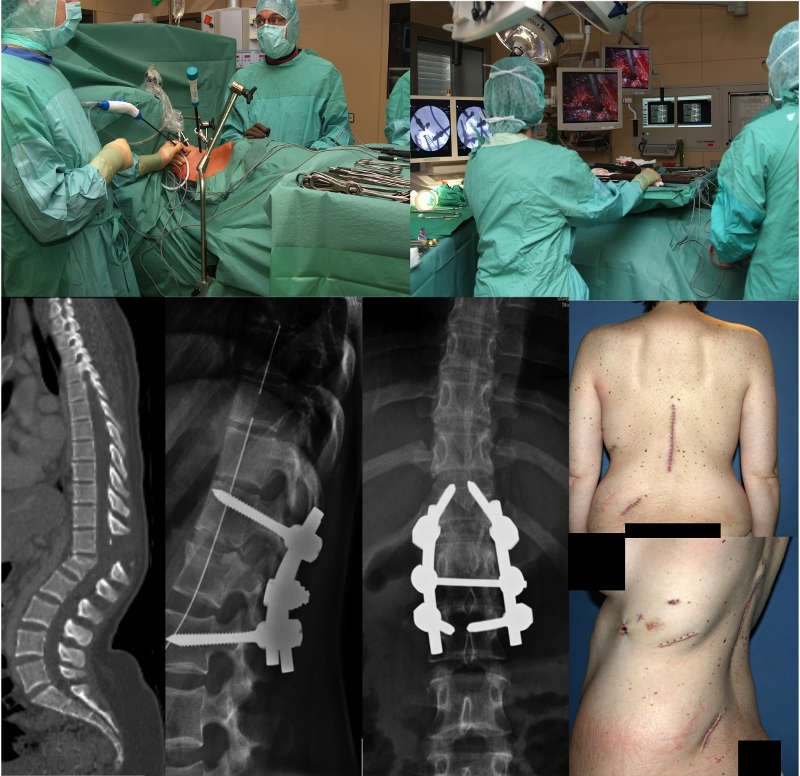Fracture spine surgery is a critical intervention aimed at stabilizing the spine, alleviating pain, and preventing further neurological damage following spinal fractures. These fractures can result from trauma, osteoporosis, or pathological conditions like tumors. Surgical approaches vary based on the type, location, and severity of the fracture.

Types of Spinal Fractures
- Compression Fractures: Often due to osteoporosis, leading to vertebral body collapse.
- Burst Fractures: Result from high-energy trauma, causing vertebral body to shatter.
- Flexion-Distraction Fractures: Occur from sudden forward motion, common in vehicle accidents.
- Fracture-Dislocations: Involve both bone and ligament injuries, leading to instability.
Indications for Surgery
- Unstable fractures threatening spinal cord integrity.
- Persistent pain unresponsive to conservative treatments.
- Neurological deficits indicating nerve compression.
- Progressive deformity or spinal instability.
Surgical Techniques
1. Vertebroplasty: A minimally invasive procedure where bone cement is injected into the fractured vertebra to stabilize it.
2. Kyphoplasty: Similar to vertebroplasty but involves inserting a balloon to restore vertebral height before cement injection.
3. Spinal Fusion: Involves joining two or more vertebrae using bone grafts and hardware to eliminate motion and provide stability.
4. Decompression Surgery: Removes bone or disc material compressing the spinal cord or nerves, often combined with fusion for stability.
Surgical Approaches
- Anterior Approach: Accesses the spine from the front, allowing direct visualization and reconstruction of the vertebral body. It’s beneficial for certain thoracolumbar fractures but is more invasive.
- Posterior Approach : Involves accessing the spine from the back, commonly used for various spinal fractures. It allows for instrumentation and fusion but may involve more muscle dissection.
- Paraspinal Approach: A minimally invasive technique that preserves muscle integrity, leading to reduced blood loss and faster recovery.
Potential Complications
- Infection: Superficial or deep infections may occur, requiring antibiotics or additional surgery.
- Hardware Failure: Breakage and migration of screws or rods can cause necessitate revision surgery.
- Nonunion (Pseudoarthrosis): Failure of bone to heal properly, potentially leading to persistent pain or instability.
- Neurological Deficits: Risk of nerve injury leading to weakness, numbness, or paralysis.
- Blood Clots: Deep vein thrombosis or pulmonary embolism can occur postoperatively.
Recovery and Rehabilitation
- Hospital Stay: Varies based on procedure; minimally invasive surgeries may allow same-day discharge, while fusion surgeries may require several days.
- Physical Therapy: Essential for regaining strength or mobility.
- Pain Management: Includes medications and possibly nerve blocks.
- Activity Modification: Avoiding heavy lifting and strenuous activities during recovery.
Conclusion
Fracture spine surgery encompasses various techniques tailored to the specific type and severity of spinal fractures. Advancements in minimally invasive procedures have improved outcomes and reduced recovery times. However, potential complications necessitate careful patient selection and postoperative care. A multidisciplinary approach involving surgeons, physical therapists, and pain specialists is crucial for optimal recovery.
Book an Appointment
Are you suffering from chronic back pain, sciatica, herniated discs, or spinal deformities? Don’t let spine problems limit your life! Contact Us
